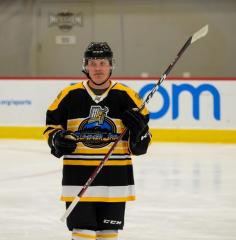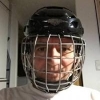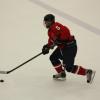Slate
Blackcurrant
Watermelon
Strawberry
Orange
Banana
Apple
Emerald
Chocolate
Marble
Slate
Blackcurrant
Watermelon
Strawberry
Orange
Banana
Apple
Emerald
Chocolate
Marble
Leaderboard
Popular Content
Showing content with the highest reputation on 01/09/13 in all areas
-
1 pointHere are some pics of me sporting our new away sweaters. The last 2 are a sequence of events of me cutting hard to the net and the goalie diving at me. He got the worst of that exchange, but he did make the save.
-
1 pointAfter re-reading your post i see that you were talking about X1.0 and X40 and not about X30 and X40 - this numbers game is really confusing ... In Germany we have the X.0 as an absolut entry-level skate, maybe this is the predecessor to the X30 which could explain the similarities between X40 and X1.0.
-
1 pointI don't think you'll be the only one out there who will be confused lol Easiest way is to follow the line up from the X 30 (there will be people who will add the ':' colon and, in the process, confuse everyone else), which is similar to the X1.0/X:05 and go up from there. But it's weird because in the catalog, the X 40, which should be the equivalent to the X2.0/X:15, has copied the features list almost word for word from the X1.0. It's most likely going to be the case of the former comment as it lines up with the X100 = APX, X 90 = X7.0 relationships as you follow the line down. Also in this year's catalog, it says that the first skate in the line (going up) to have fully thermoformable uppers is the X 80, which is supposedly the X6.0 replacement. In last year's catalog, the first skate with that 'feature' was the X5.0 (X 70 this year?), but in practise, the X4.0s were stiff enough to be baked that I'd recommend doing those and very rarely did I get people baking 3.0s because they were so much softer. So perhaps this year it would be the same with the X 70-X 50 practically speaking.
-
1 pointThanks, JR -- the MSH catalogues are always a highlight. Unchanged: pants, C/A's (still with the AWESOME removable chest/belly liner on the Pro -- a huge contribution to the cleanliness AND 'air-bag' protection of any C/A), the Wright-based (960, etc.) and NME mask lines, and most of the Supreme lines (except as below). The Reactor line takes over from the Rx series and several legacy pieces, and, having made the original Reactor 6 pad one of my first tear-down projects, I'm very interested to see the pads in particular. It is also extremely cool to see Brian Elliott rewarded for an incredible season by being made the face of the Reactors: well earned. What's a little strange is that Bauer seems to have positioned the Reactor line, pads aside, in a 'budget' position relative to the Supreme. Their language suggests that Bauer intends the Reactor to be an 'agile' or 'classic' line, and the Supreme line more about butterfly coverage and heavy-duty protection, but the *impression* from the catalogue is often that the Reactor line is simply missing the top-end Supreme features. Consider the new 2013 goal jocks, an update on the slightly angular design inherited from Itech. They appear, in essence, to be the same design: apart from colour differentiation (yellow and blue), there's only the addition of a layer of MaxSorb over the Supreme's cup (a welcome addition, I'm sure!), and the use of mesh on the Reactor's pelvic shield. The Reactor goalie jock appears to be just a downspec'ed Supreme. It may be a few grams lighter, but Bauer hasn't stressed that here, and on the core protection it hardly matters. Ditto the neck-guards: the Supreme has MaxSorb in the central clavicle plate; the Reactor is just foam. Personally, I'd like to see MaxSorb in the collar, the entire clavicle shield, AND extended down into a sternum and heart guard, but I am admittedly a Maltese devotee and a stickler for overprotection here. The knee-pads are similarly positioned. The Supreme knees are the same three-piece design as the old Itech/Bauer pro models, save for changes in colour (now bright yellow instead of orange), the addition of MaxSorb (added, oddly, it seems, only to the top thigh-guard, which is as likely to see a puck as an emergency call-up), and the addition of the same bottom 'tab', below the knee piece, that Reebok introduced in their revised PS2 knee-pad. (As I mentioned in the Warrior review, all knee-pads from this pads three-piece design are sourced from the same basic parts; they have a lot in common.) The 2013 Reactor knee-pad is, at last, an upgrade on the budget blue-lined 'apostrophe' or 'comma' knee-pads (so-called for the curved pieces of plastic below the knee) that had remained unchanged since the days of the Cooper Reactor line. It's a simple design, but it works: Marty Biron is still using a pair from the 1990s. Unfortunately, in upgrading the anterior (frontal) protection of these knee-pads for 2013, Bauer also removed the lateral (outside) 'apostrophe' of plastic and foam, leaving the knee exposed to low-angle shots, especially in post-hug positions including the VH. Frankly, I suspect a lot of goalies may start wearing these backwards (left pad on right leg, and vice versa), simply to keep this spot covered, since it's at least possible to protect the inside of the knee with good, crisp technique; the outside is generally not well protected, especially if you like an open or absent knee-lock. And the same appears to be true of the skates. The Pro (aka One100) continues to be the only skate that offers the Curv composite uppers and a 3mm blade. The Reactor 6000 *appears* to be the same basic specs as the Elite (One80), based on a 'tech mesh' upper with a 4mm runner under the Vertexx cowling; the R4000's nylon upper and non-cutout (aka One60) cowling likewise mirrors the low-end Performance skate form the Supreme line. That said, a couple of interestingly subtle differences between the two skate lines suggest where Bauer is going with the Reactor/Supreme distinction. The extended felt tongue is, to my mind, purely cosmetic for goalies, but it does add to the visual distinction between the white/blue/grey of the Reactors and the black/orange (as opposed to black/yellow everywhere else) of the Supremes. The main difference seems to be that the Reactor's tendon-guard is cut substantially lower and with considerably more potential flexibility than the Supreme line. NB: in the smaller pictures, it can appear that the Reactors are using a different version of the Vertexx cowling that seems to wrap a little higher up the heel of the boot. This is, in fact, just an optical illusion, due to the white 'Reactor' branding on the heel of the R6000 and R4000 boots; the Vertexx cowling remains unchanged in 2013. It's in the PADS that we start to see these differences in the skate lines played out in the most interesting ways, and the Supreme and Reactor lines start to take shape. The Supreme pads and gloves (aka the "ONE" line) remain unchanged for 2013, except that the "ALIVE" composite reinforcement in the TotalONE glove palm now carries its industry trade name "Curv," as throughout the catalogues. Weirdly, Bauer no longer describes the nature of the Supreme glove's break (illustrated as "thumb-to-fingers closure in the 2012 catalogue, p.19), and no longer shows a close-up of the AbSorb patch at the heel of the blocker palm. The Reactor pads, however, are a new and very interesting proposition. They share the standard triangular vertical roll and angular, tapered boot (JRZ design standards) with the Supreme line, but represent a a different and classic approach to some key aspects of pad construction. The original (pre-Nike) Bauer Reactor pads had what were called Flexx Darts: a series of pleats in the vertical roll's shell, breaks in the vertical roll, carrying through into functional shin-rolls and breaks in the foam core. Despite the Reactor's being an early transitional sheet-foam pad, these Flexx Darts and their associated structures meant that the pads could wrap around your knees like leather and deer hair, after a short break-in period to loosen up the seams and foams. This same concept can be seen in the segmented triangular vertical roll and knee-rolls of the 2013 Reactors. In addition to a rounder, more natural curvature around the knee, the old Reactor Flexx Darts, once broken in, would absolutely kill shots to the thigh-rise: no dangerous mid-line rebounds coming out of the five-hole in the butterfly. Hockey World - Reactor 6 specs (thanks to Perani's online division!) While there has been a trend, recently, to produce 'retro' designs with superficial knee-rolls that have absolutely zero correspondence to the function of the pad, the 2013 Reactor's knee flexibility is the real deal. Sadly, the vertical stitching through the shin is purely cosmetic; the days of pads with true lateral flexibility -- the ability to twist the pad between the knee and boot -- seem to be done, at least for the foreseeable future. That said, the last couple of iterations of the original Bauer Reactor *also* had a solid sheet of HD foam in the shin, and very limited lateral flexibility, so it's not exactly worth crying over. (For what it's worth, you *can* make a sheet-foam pad with killer lateral flexibility -- it's just not easy to figure out.) Part of the reason the original Reactor line did so well was that it was one of the first pads, almost to the same extent as Pete Smith's groundbreaking Vaughn Velocity design, to offer a nearly perfect modern butterfly rebound profile. Shots to the boot and shin hit high-density foam, and could be booted out of harm's way; shots to the thigh-rise and knee, in the five-hole, just died. Strangely, this has become increasingly difficult to find in goalie pads, many of which now generate midline rebounds off the thigh-rises with just as much energy as off the boot and shin, I have a strong suspicion that goalies who move into the Reactor line and give their pads a good break-in will be treated to some rather remarkably effective five-hole performance. Working down the line, the 'pro' Reactor 6000 pads are Made in Canada, with a sewn-in knee-lock, sized in 1" increments from 33" to 37", with a standard "+1" thigh-rise -- which actually means that the thigh-rise is, well, not plus anything but the same size consistently. The 'senior' 4000 (1" increments 33"-36", also available in intermediate sizing: 28", 30", 32") is the same basic design, made offshore with an adjustable knee-lock, but the 4000x adds the MyFlex selectable break system from the Supreme line -- an interesting addition. I really like the options for fit and function Bauer's included at this price-point. The 2000 pads, predictably, are budget versions of the 4000, the senior-size pads offered in 32", 34", and 36", with a junior line 26", 28", and 30". (Below 26", you're looking at the Prodigy youth line, which features the newbie parent-friendly fit and wear instructions printed on the pad -- major points for this.) Sir Roderick Laforme of The Goalie Crease (not the website, the extremely knowledgeable, friendly, and exclusive goalie retailer in Toronto) has some very interesting intel on the Reactor pads, both in how they play and the available MTO options: From the catalogue alone, it's a bit hard to get a read on the Reactor gloves at this point. The most obvious difference from the Supremes is the two-piece cuff and full binding perimeter of the Reactors, as opposed to the one-piece cuff and partial bindingless construction on the Supreme gloves. Bauer also lists the Reactor as a "full hand closure," like they did the RX10 last year. However, the difference between one- and two-piece cuffs is basically non-existent these days, and so I've had to look beyond the catalogue for some additional info -- which suggests that the Reactor trapper is not merely the RX10 in new clothing, but something rather more interesting: More from Sir Rod on the Reflex gloves: The "Roli Spec," for those who haven't encountered it before, is Bauer's shorthand for a particular interpretation (NOT a clone) of the classic Vaughn T5500 'Vision' glove -- apparently the closest to this gold standard Bauer's ever come in a retail glove. The Goalie Crease has, for years, brought in custom orders of Roli, Kipper (Vaughn V1), and other NHL-spec gloves, and now the Roli Spec catcher looks to have made it to prime time. Very cool stuff. I'm also pleased by Bauer's continued attention to backhand (what Rod calls 'backpad') design. This is a grotesquely overlooked aspect of gloves. It's often assumed that most of a glove's catching ability happens on the anterior (frontal) aspect, where the puck impacts most commonly. However, the backhand of a glove, if improperly designed, can actually render an otherwise fine glove useless for catching. The dark secret to making almost any glove feel like a baseball glove -- that is, like a T5500 or a TPS Bionic -- is simply to disconnect the backhand, or loosen it as much as possible. Crank the straps back down, and it stops working naturally. My hope is that the Reactor will mark a major return to pure baseball-style catching gloves. And, since I'm a glutton for nourishment, a little more from Rodamanthus on the subtleties of the Roli Spec, and how it relates to other interpretations of the 5500: A final interesting wrinkle from Rod regarding availability: So it seems like Bauer is really going to put their best foot forward with a classic, super-flexible pro-grade Reactor pad early in 2013. Lastly, also new for 2013 is the Bauer Concept mask line, which is added to the ongoing NME and Wright-inspired 960 etc. lines. While the protective value of these new masks remains an unknown -- and as possibly the lightest and thinnest mask ever to hit the market, that is definitely an area of interest -- there are some neat features that are worth pointing out. The carbon edge wrap is an attempt by Bauer to address a huge problem in retail masks: chipping around the perimeter of the shell, particularly in thin or aggressively styled edges. Some goalies had actually been using car door trim to protect their edges, but Bauer has now incorporated this into the shell itself. The Concept line also sees the introduction of two potentially valuable protective technologies: the SAW [shock-absorbing wire] cage clips and Suspend-Tech liner. The SAW system is, depending on your point of view, either an enhanced version of the rubber bushings goalies have been using to add extra shock-absorbtion and vibration-dampening around their cage hardware for years, or a scaled-down, non-pneumatic version of a baseball catcher's cage shock-absorbers. Either way, it's great to see this in a major retail mask, since even a fair hack solution like rubber washers can make a huge difference, especially in post-impact ringing. The latest medical information suggests that goalie are, in fact, at exceptionally low-risk for catastrophic concussion, but extremely high risk for repeated sub-clinical (that is, undetectable) impacts, so any little bit helps. How a free-floating suspended liner will translate into a goalie mask remains an unknown, but I can't see how it would be a detriment: pro goalies have been using chin-slings successfully for years, and the mechanical principles are the same. That's it for now: back to the MLA with me...
-
1 pointThanks to my brother for a late christmas gift, although I seriously have too many pairs of gloves.
-
1 pointTHOSE are four years old?! Don't skate much I take it? They look immaculate, haha





